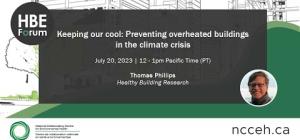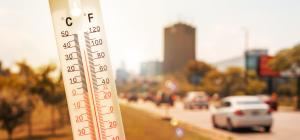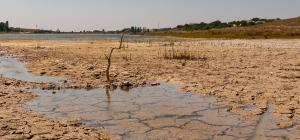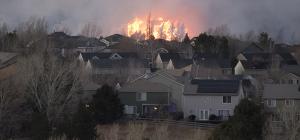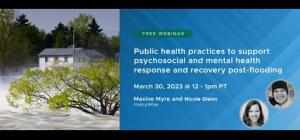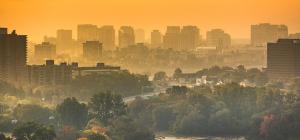
COVID-19 management during public health emergencies
The goal of any public health emergency is to help as many people as quickly as possible. The COVID-19 pandemic has brought a new dimension to emergency management. Not only has COVID-19 made it difficult to employ common practices, like sheltering people together in an evacuation centre, but certain emergency conditions may exacerbate COVID-19 risk (e.g., exposure to wildfire smoke). Health inequities exploited by COVID-19 further intensify certain population’s vulnerabilities to emergencies. In addition, mass evacuations and the unavoidable need for congregate or community shelters provide opportunities for person-to-person transmission and movement into new communities. This severely complicates contact tracing and isolation of those exposed.
This topic page is not intended to support pandemic planning or preparedness in general, but rather to gather resources that address how typical emergency management practices and procedures may need to be adapted to a pandemic context.
Please see our other Environmental Public Health Emergency Resources:
- Extreme heat
- Floods: Prevention, preparedness, response and recovery
- Oil spills and health
- Psychosocial impacts: Resources for mitigation, response and recovery
- Wildfire smoke and health
Preparedness for emergencies
- Natural Disasters & COVID-19: Resources for Professionals & Emergency Workers (US Centers for Disease Control, Sept 2020)
This webpage provides a range of preparedness and response resources, including communications, contact tracing, shelters and reception centers, public health laboratories, and wildfire events.
- Readying for a Post–COVID-19 World: The Case for Concurrent Pandemic Disaster Response and Recovery Efforts in Public Health (Barnett et al., Aug 2020)
This commentary lists a number of priorities for public health systems to engage in recovery as preparedness for an ongoing, long-term crisis.
- Preparedness for cyclones, tropical storms, tornadoes, floods and earthquakes during the COVID-19 pandemic (World Health Organization, 2020)
This rapid guide highlights some key areas in which jurisdictions may need to adapt their responses to various natural disasters.
- Investing in and building longer-term health emergency preparedness during the COVID-19 pandemic (World Health Organization, 2020)
This guidance document highlights the opportunities for building preparedness capacity for all types of emergencies, during and after the pandemic, by learning through the pandemic response.
Extreme heat
- Guidance for community cooling centres in the context of COVID-19 (BC Centre for Disease Control, 2020)
This guidance document provides advice on establishing community cooling centers, with additional considerations for humidity, concurrent wildfire smoke, and the risk of Legionnaire’s disease from stagnant water in the building’s cooling system.
- Heat and COVID-19 Information Series (Global Heat Health Information Network, 2020).This website containments a number of resources relevant for public health professionals, city planners, and frontline care providers confronted with extreme heat during the pandemic. The information series includes a technical brief and planning checklist, as well as a number of FAQ documents regarding cooling technologies, vulnerable populations, and adapting cooling centers (among others).
- Outdoor Cooling Space during COVID-19 (BC Housing, 2020)
This guidance document provides detailed advice on establishing and managing outdoor cooling centers, which in suitable conditions can reduce the risk of COVID-19 transmission compared to indoor cooling centers. A quick guide is also available.
- Risk mitigation tool for outdoor recreation spaces and activities operating during the COVID-19 pandemic (Health Canada, 2020)
This toolkit may assist in setting up outdoor cooling spaces, or in utilizing parks and other public spaces.
- The Use of Portable Fans and Portable Air Conditioning Units during COVID-19 in Longterm Care and Retirement Homes (Public Health Ontario, 2020)
This guidance document provides information on the risks and benefits of using cooling devices like fans and air conditions in long-term care homes, but is pbroadly applicable to other settings as well.
- COVID-19: Adaptation of Public Health Recommendations for Extreme Heat in Accordance with Physical Distancing Recommendations (Institut national de santé publique du Québec, 2020)
This guidance document uses the recent literature to contextualize COVID-19 risk within that of extreme heat, and provides some commentary on the risk of public pools for cooling.
Evacuation and reception centres
- Emergency Evacuation and Sheltering During the COVID-19 Pandemic (National Academies of Science, Engineering, and Medicine, 2021)
This guidance document derived from expert consultation provides advice on planning evacuations, operating shelters and communicating about these activities with reference to the COVID-19 pandemic.
- Shelter Guidance: Preventing, Controlling and Managing COVID-19 (Alberta Health Services, 2020)
This guidance document provides an example of how managing evacuations and reception centers might need to be modified in response to the potential for COVID-19 transmission. The Province of BC has also provided evacuation guidance to the public.
Flooding
- Spring Flooding Response - COVID-19 Guidelines (Government of BC, 2020)
This webpage provides a useful guide on how to manage worksites for sand-bagging and berm building, jobs in which speed and many hands are critical to an effective flood response.
- Managing disasters amid COVID-19 pandemic: Approaches of response to flood disasters (Ishiwatari et al. 2020)
This article covers some of the ways in which jurisdictions have accounted for COVID-19 risk during recent emergencies, and identifies some key principles for flood responses under pandemic conditions.
Wildfire smoke
- Wildfire and COVID-19 pandemic: effect of environmental pollution PM-2.5 and carbon monoxide on the dynamics of daily cases and deaths due to SARS-COV-2 infection in San-Francisco USA (Meo et al., Oct 2020)
This article demonstrates that the potential relationship between wildfire-related air pollutants and COVID-19 illness.
- The COVID-19 Pandemic and Wildfire Smoke: Potentially Concomitant Disasters (Henderson, 2020)
This article lays out some of the ways in which COVID-19 may amplify the public health impacts of wildfire smoke events.
- COVID-19 Considerations for Cleaner Air Shelters and Cleaner Air Spaces to Protect the Public from Wildfire Smoke (US Centers for Disease Control and Prevention, 2020)
This guidance document provides advice for staffing and managing cleaner air shelters in enclosed spaces without elevating transmission risk.
- Wildfire Smoke and COVID-19: Frequently Asked Questions and Resources for Air Resource Advisors and Other Environmental Health Professionals (US Centers for Disease Control and Prevention, 2020)
This webpage addresses some of the most common questions about the interaction between wildfire smoke exposure and COVID-19 infection.

